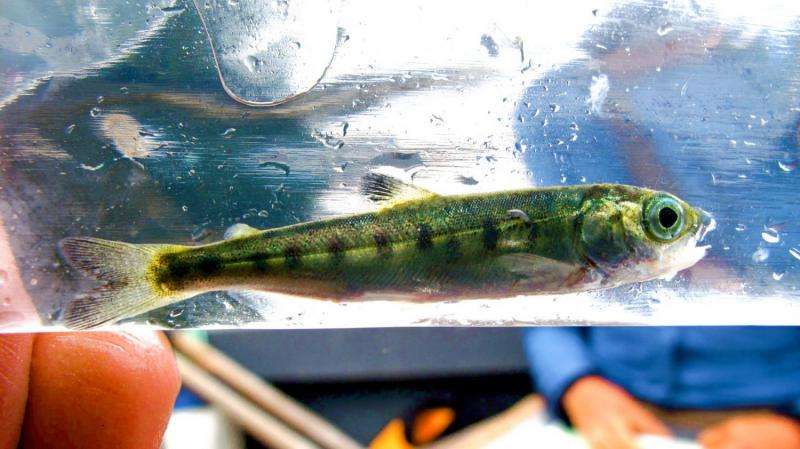Lousy sockeye are lousy competitors

Recently published research indicates that juvenile Fraser River sockeye salmon that are highly infected with sea lice are 20 per cent less successful at consuming food than their lightly infected counterparts. Sean Godwin, a Simon Fraser University doctoral biology student is the lead author of a study, co-authored by SFU biologists John Reynolds and Larry Dill (emeritus), and University of Toronto researcher Martin Krkosek. The study appears on line in the Canadian Journal of Fisheries and Aquatic Sciences.
Godwin says given how little is known about what affects sockeye survival in the ocean and how uncertain federal fisheries' predictions are as a result, this study's findings deserve serious attention.
"We need to get a better understanding of whether the effect of sea louse infection in our study scales up to the population level," explains Godwin. "This is the first concrete evidence to suggest that sea lice may indirectly affect the survival of juvenile sockeye, not directly through disease but instead through reduced foraging success. More research is needed to determine whether sea lice influence adult sockeye returns."
Godwin notes research suggests that the early marine life of these sockeye is a gauntlet of survival challenges, particularly in Johnstone Strait.
"This is where they have to cope with challenges such as increased predation, lack of food and pathogens such as sea lice," says Godwin. "They have to have sufficient energy reserves and be able to capitalize on whatever food they can find. If their ability to compete for limited food is impaired, say by sea louse infection, starvation risk could be increased."
Godwin says that fish farms have previously been linked to infection of wild juvenile sockeye by sea lice and that Pacific herring might also be a second reservoir for the parasites. The fish farms that would be affecting Fraser River sockeye hold Atlantic salmon, are Norwegian-owned and are mainly located in the Discovery Islands, between the Mainland and northern Vancouver Island.
More information: "Sea lice, sockeye salmon, and foraging competition: lousy fish are lousy competitors" Canadian Journal of Fisheries and Aquatic Sciences, DOI: 10.1139/cjfas-2014-0284
Journal information: Canadian Journal of Fisheries and Aquatic Sciences
Provided by Simon Fraser University

















